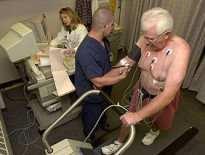
Opioids are a family of pain medications chemically related to opium and heroin. They include morphine, fentanyl, codeine, hydromorphone and others. Opioids have unique properties that make them both indispensable for pain management and extremely dangerous.
Unlike virtually any other family of medications, opioids have no maximum effective dose. If any dose, no matter how high, is ineffective at controlling pain, a higher dose can give more pain relief. Most other medications don’t work this way. For example, if 800 mg of ibuprofen doesn’t bring relief, it’s very unlikely that any higher dose will. This property makes opioids a mainstay for treating severe acute pain, such as from fractures or after surgery.
But the risks and side-effects are substantial. Tolerance (diminished effectiveness with repeated use) is a common problem requiring dose escalation to maintain the same pain relief. Withdrawal symptoms are miserable (but not dangerous) and addiction is very common. The most serious risk is that opioids decrease the drive to breathe. In patients who are dying and short of breath, this is a welcome benefit, not a side-effect. Opioids are essential in hospice care because of their ability to eliminate the sense of shortness of breath. But that same effect in an overdose can stop breathing entirely. Philip Seymour Hoffman is only the most recent well-known victim of this property of opioids.
When I did my residency in the mid-90s the philosophy I was taught about opioids was simple. Opioids were for acute pain. If you broke a bone or had a documented kidney stone you could have a prescription that would last a week or so. Patient requests for more prolonged treatment were met with suspicion. The exception was for dying patients. If you had chronic pain form a disease that was going to kill you, you could have all the opioids you wanted. But if you had chronic pain from arthritis, or chronic back pain, or anything else non-fatal, then opioids were simply off the table. You had to make due with other medicines.
Sometime thereafter, we went through a revolution in our attitude. I’m not a pain specialist, so I don’t know if the revolution was supported by any scientific evidence or was simply a change in philosophy. The new teaching was that pain should be treated seriously, and that doctors had been negligent in providing their patients adequate pain relief. Since pain is an entirely subjective experience, there is no test or objective measurement for pain, and the patient’s report of pain should be accepted at face value. The use of opioid analgesics for chronic conditions became acceptable when other options failed.
What followed was an explosion of opioid prescriptions, opioid addiction, and overdose deaths. In 1999 in the U.S. 4,030 people died from overdoses of opioid prescription medications. In 2010 that number had more than quadrupled to 16,651. Since 2003, more people have died from overdoses due to prescription opioids than due to heroin and cocaine combined.
This month the American College of Physicians issued a policy position paper about prescription drug abuse. It was much more of a description of the current dilemma and a recommendation for future research than a guideline for prescribing physicians. The latter is what is desperately needed.
Adding fuel to this fire is the FDA’s decision this week to approve Zohydro, a new extended release formulation of hydrocodone. This decision has received much criticism from physician groups (see links to news articles below) who warn that the potential for abuse and overdose is enormous and that the need for another opioid analgesic is nonexistent.
Has our new more lax prescribing philosophy allowed some chronic pain patients to achieve adequate relief? Is the epidemic of addiction and overdose deaths simply a terrible but acceptable price to pay for the benefit of a far greater number of people who use opiates responsibly? I honestly don’t know. I would love to hear from a pain specialist if any rigorous studies exist on the topic. The societal problem of opioid addiction may have no solutions, only trade-offs. It would be nice if those trade-offs were informed by data.
Learn more:
CDC Grand Rounds: Prescription Drug Overdoses — a U.S. Epidemic (Morbidity and Mortality Weekly Report)
QuickStats: Number of Deaths From Poisoning, Drug Poisoning, and Drug Poisoning Involving Opioid Analgesics — United States, 1999–2010 (Morbidity and Mortality Weekly Report)
Is Zohydro, The Super Potent New Opiate Painkiller, Just Too Dangerous? (Forbes)
New pain pill’s approval: ‘Genuinely frightening’ (CNN Health)
Potent New Painkiller May Prove Lethal for Addicts, Critics Warn (NBC News)
Prescription Drug Abuse: Executive Summary of a Policy Position Paper From the American College of Physicians (Annals of Internal Medicine)

